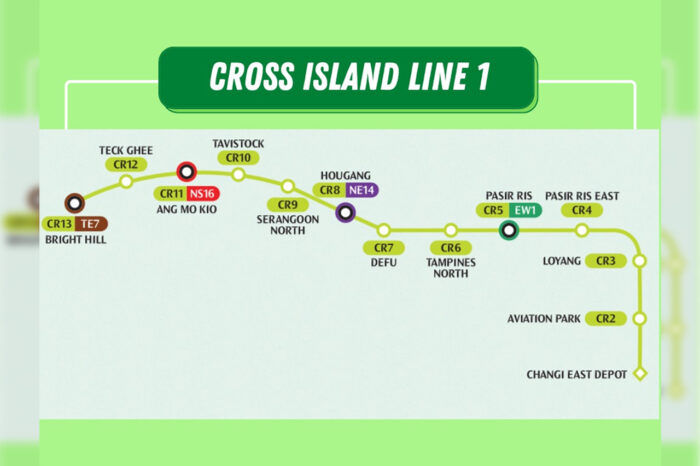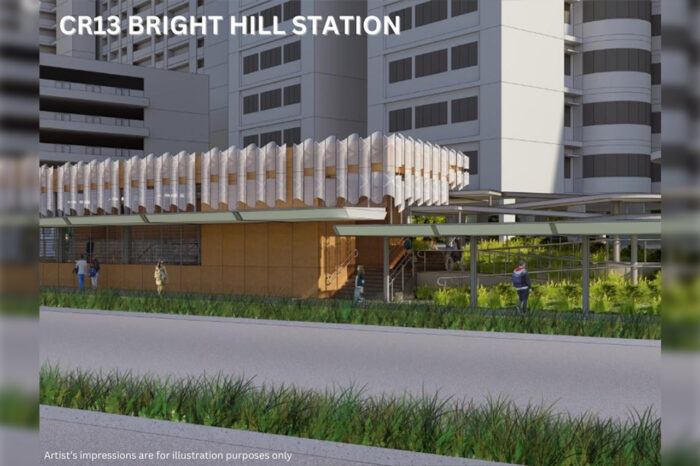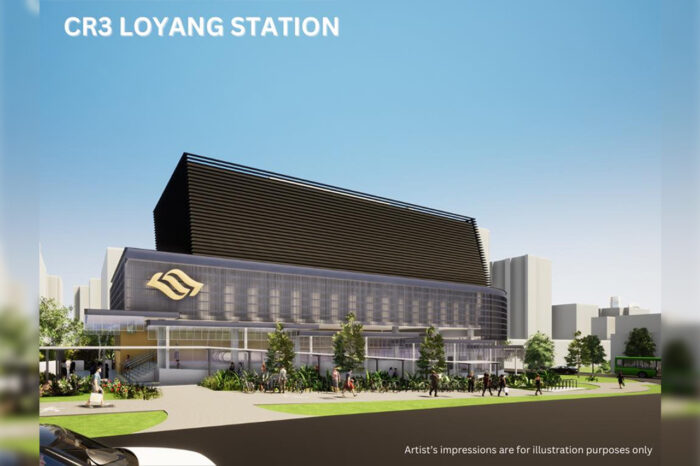Construction work on Phase 1 of the Cross Island Line (CRL) — Singapore’s eighth and fully-underground MRT line, which spans over 50 kilometres when fully opened — has officially started on Wednesday (Jan 18).
The CRL will serve developments in the eastern, western and north-eastern corridors, linking areas such as the Jurong Lake District, Punggol Digital District and Changi Region.
Interested in reading our future posts?
Follow us on Facebook, Instagram and Telegram to get the latest updates!
Construction Begins for Cross Island Line
Improved connectivity and greater convenience from 2030
Transport Minister S Iswaran, who officiated the ground-breaking ceremony at the site of the future Bright Hill CRL station, said eight in 10 households will be within a 10-minute walk of a train station when the CRL is fully operational.
For example, a Sin Ming resident living near Bright Hill will take only 30 minutes to travel to Pasir Ris East, compared to the 80 minutes travelling time of today.
Almost half of the CRL stations will be interchange stations when fully operational, giving commuters many more travel route options and redistributing commuter traffic from busy interchanges along the Circle Line (CCL), said Mr Iswaran.
CRL will interchange at Pasir Ris and Clementi on the East-West Line (EWL), Hougang on the North East Line (NEL), Ang Mo Kio on the North-South Line (NSL), Bright Hill on the Thomson-East Coast Line (TEL) and King Albert Park on the Downtown Line (DTL).
Bright Hill CRL station will be connected to a new Transit Priority Corridor
The Bright Hill CRL station will also be connected to a new Transit Priority Corridor (TPC) along Sin Ming Avenue to allow multi-modal transfer to the bus and active mobility networks, added the Land Transport Authority (LTA) in a news release.
RELATED: Construction of Bright Hill MRT Station for the Cross Island Line To Start in Q2 2022 »
“The 2-km stretch of TPC will include a dedicated bus lane, new cycling paths and wider footpaths.”
“When the TPC is fully completed in 2029, residents in (the) Sin Ming area will have more travel options to get to Bright Hill MRT station and recreational spaces such as Bishan-Ang Mo Kio Park,” LTA said.
Over 1 million commuters to use CRL in the longer term
Mr Iswaran said the CRL is key to Singapore attaining its target of having 9 in 10 peak-period Walk-Cycle-Ride journeys completed in less than 45 minutes.
Over 600,000 commuters are expected to use the CRL daily when it starts operating in 2030, with the ridership set to increase to over a million in the longer term.
As such, provisions have been made to expand the CRL trains from its initial six-carriage length to eight carriages, catering to higher future demand, Mr Iswaran added.
Residents, commuters and motorists in Pasir Ris and Changi and Loyang can also look forward to increased convenience, shorter travelling times, as well as improved intra-town and inter-town connectivity when the future Pasir Ris, Pasir Ris East and Loyang CRL stations are completed, said LTA.
Virtual and Augmented Reality tools used to enhance CRL construction capabilities
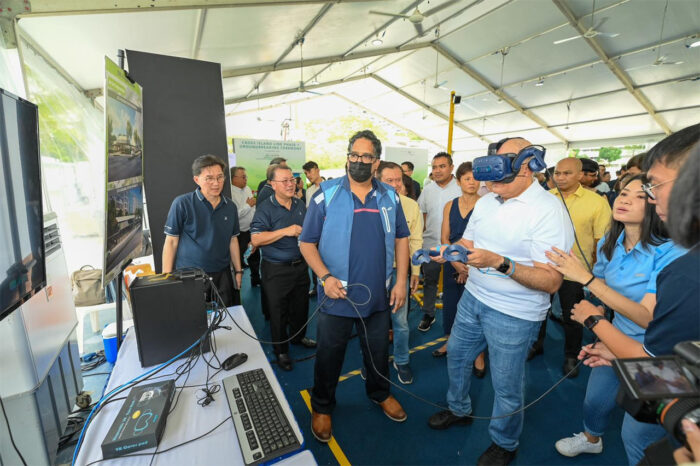
Transport Minister S Iswaran trying out the Virtual Reality (VR) system. (Image: S Iswaran/Facebook)
Spanning the entirety of Singapore, the CRL will “certainly test the professional mettle of our engineers and all our partners”, said Mr Iswaran.
“That means having to tunnel through a wide variety of soil conditions at different stretches, ranging from soft marine clay to extremely hard rock.”
“Special machines and added precautions will be needed, to ensure the safety of our workers, the stability of the ground, and the integrity of adjacent buildings,” added Mr Iswaran.
Mr Iswaran also noted that construction of the CRL will also need to “navigate a maze of utilities, telecommunication cables and foundation piles”.
As such, LTA and its partners have deployed and adopted various technologies to enhance construction efficiency and safety, including Virtual Reality (VR) and Augmented Reality (AR) tools to enhance capabilities and facilitate coordination.
LTA has also increased productivity through platforms such as computer simulations of different operating scenarios at the future Changi East Depot.
Pasir Ris CRL station will become the deepest MRT station in Singapore
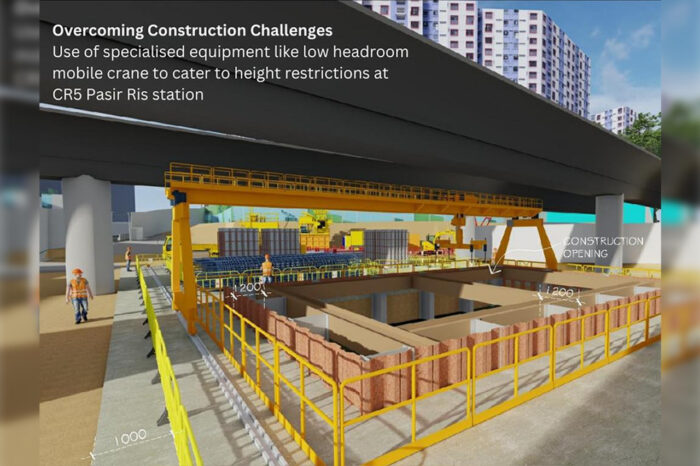
Overcoming Construction Challenges: Use of specialised equipment to cater to height restrictions at Pasir Ris CRL station. (Image: LTA/Facebook)
It is a “tall order and complex undertaking” to conduct such major works in close proximity to densely built-up spaces, with minimal disruption to residents, roads and existing rail lines, noted Mr Iswaran.
The tunnels of CRL phase 1 will extend to almost 50 metres underground, at its deepest, equivalent to the height of a 16-storey housing block – two times deeper than the typical underground rail line.
At 47 metres underground, the future Pasir Ris CRL station will hold the new record for the deepest MRT station in Singapore.
SEE ALSO: Notable Depths of MRT stations in Singapore »
The largest Tunnel Boring Machine (TBM) ever deployed for an LTA rail project will be used at various stretches of the CRL, such as the section between Defu and Tampines North CRL stations and the section between Aviation Park and Loyang CRL stations.
Measuring 12.6 metres in diameter, this TBM is as tall as a four-storey building and is 75 per cent larger than a conventional TBM, allowing the construction of one single tunnel with two tracks, instead of twin tunnels, Mr Iswaran highlighted.
At the Teck Ghee CRL station and the North-South Corridor and at Loyang CRL station and Loyang Viaducts, all rail and road works will be concurrently taken place to streamline resources and minimise disruptions.
Interested in reading our future posts?
Follow us on Facebook, Instagram and Telegram to get the latest updates!
Check Out Other Related Posts
LTA Awards Contract for Punggol MRT Station of the Cross Island Line, Constructions Begin in 1H 2023
LTA Announces Start of Jurong Region Line Construction, 24 MRT Stations Opening from 2027
Related Links
Cross Island Line – SGTrains
External Links
Construction Commences on the Cross Island Line – LTA [Accessed 19 Jan 2023]
Speech by Minister for Transport Mr S Iswaran at the Cross Island Line Phase 1 Ground-breaking Ceremony – MOT [Accessed 19 Jan 2023]
“Works have started for the first phase of the Cross Island Line – Singapore’s eighth and longest fully-underground MRT line!” – S Iswaran/Facebook [Accessed 19 Jan 2023]
Images: LTA, LTA/Facebook, S Iswaran/Facebook.
This article first appeared on SGTrains.
Last updated on 19 Jan 2023.
Interested in reading our future posts?
Follow us on Facebook, Instagram and Telegram to get the latest updates!


